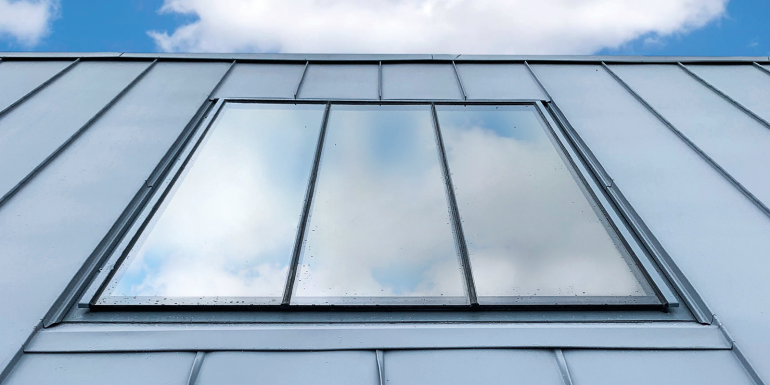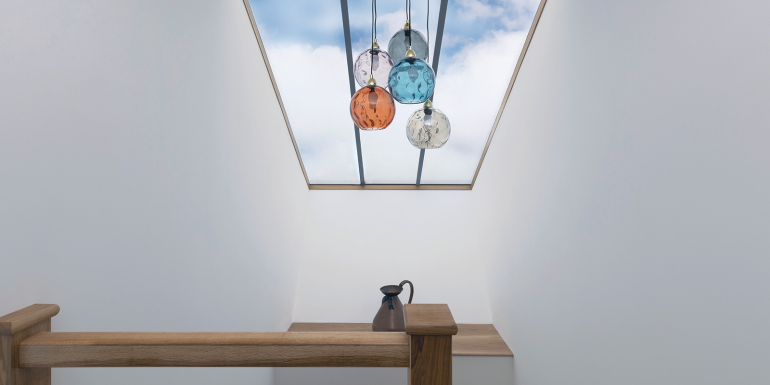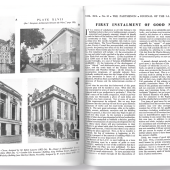Shedding light on the rules

Paul Trace, Director of Stella Rooflights, addresses the new Part L Building Regulations for roof lights and thermal performance
A major part of England’s commitment to meeting its carbon reduction targets is being driven by a tightening of the Building Regulations surrounding energy efficiency standards for homes.
The Department for Levelling Up, Housing & Communities argues that by making our buildings more energy efficient and embracing smart technologies, we can cut household bills, reduce energy demand and boost economic growth while meeting our targets for carbon reduction and maintaining healthy environments. As such, it has introduced the Future Homes Standard to ensure all new build homes achieve a 30% reduction in carbon emissions through improved energy efficiency from 2022, and a 75% reduction from 2025.
The new Building Regulations aimed at achieving these targets will comprise five new Approved Documents, which will come into effect in June 2022. Manufacturers, architects, specifiers and customers looking to install roof lights and roof windows will be most interested in uplifts to the Approved Document L, Conservation of fuel and power Vol 1: Dwellings.
For roof lights, skylights and roof windows – the definition of which is crucially important – the relevant consideration is the thermal transmittance. This is measured as a U-value in watts per square metre per degree kelvin (W/m²K). The lower the U-value, the more efficient a structure is at keeping heat flowing through it to a minimum. The new regulations deem the highest acceptable U-values to be 2.2W/m²K for roof lights and 1.6 W/m²K for roof windows.
Roof lights v roof windows – what’s the difference?
To correctly assess whether an element is within the new U-value limit, the element’s U-value must be calculated in the appropriate plane – either horizontal or vertical. This makes a big difference, as testing the same product in either a horizontal or vertical position will make a significant difference to the resulting U-value. A vertical position will provide a much lower (and therefore superior) U-value.
This is where the definition of the terms roof light and roof window prove crucial in determining how they should be tested and what the relevant U-value should be for each. According to the Approved Document the following definitions apply:
- Roof light: A glazed unit installed out of plane with the surface of the roof on a kerb or upstand. Also sometimes referred to as a skylight.
- Roof window: A window that is installed in the same orientation as, and in plane with, the surrounding roof.
Therefore, while we might refer to our product as a roof light or skylight, the official terminology for a conservation roof light – which is designed to sit flush within a roof line – should be a roof window.
According to the approved document, the U-values for roof windows should be calculated based on a vertical position. For roof lights, U-values should be calculated based on a horizontal position.
Further guidance in the Building Research Establishment’s BR 443 states that U-values for roof windows and roof lights are usually quoted in the vertical plane. This allows the comparison of different products that could be used at different inclinations. However, for the purposes for calculating heat losses from buildings, U-values should relate to the plane of the component as installed in the building.
This can be done by calculating the U-value of roof lights and roof windows, allowing for the angle of the roof in respect of both surface resistances and gas space resistances. Alternatively, the following adjustments can be made to U-values assessed for components in the vertical plane:

Figure 1 U-value adjustment table from Conventions for U-value calculations (2006 edition) by Brian Anderson, BRE Scotland
It is important to understand that there is much ambiguity surrounding roof lights, skylights and roof windows, and the U-values quoted by various manufacturers. The much-coveted U-value figure has become a powerful sales tool for those claiming to be the best performing or most thermally efficient roof light on the market; you will often see figures advertised that are at best misleading and at worst untrue.
Some companies might even try and confuse you by quoting the centre pane figure for the glass, rather than a whole frame U-value, which is the legal requirement. In any case, caution is advised when researching the various products available, and you should always request evidence to support the thermal performance claims made.
U-value calculations for roof windows and roof lights must be undertaken by an approved UKAS-accredited product certification agency, which will calculate accurate thermal performance figures based on the product’s individual components.
Given that Stella uses quality materials in its manufacturing process – from the highest specification glazing and handmade hardwood liners, to rubbers and seals – it’s confident in claiming its roof windows are among the best performing on the market, with the triple-glazed fixed product achieving a U-value of 1.1 W/m2K.
A caveat for conservation properties
The majority of conservation roof lights are installed in traditional properties, barn conversions and listed buildings. If your project involves such a property, you may find that there are exemptions to these new regulations.
The Approved Document states that the energy efficiency of historic and traditional dwellings should be improved only if doing so will not cause long-term deterioration of the building’s fabric or fittings.
New extensions to historical and traditional dwellings should comply fully with the energy efficiency standards, unless there is a need to match the external appearance or character of the extension to that of the host building. In which case, the work should comply with standards in the approved document to the extent that it is reasonably practicable.
In determining whether full energy efficiency improvements should be made, the building control body should consider the advice of the local authority’s conservation officer. Additional guidance is available in Historic England’s Energy Efficiency and Historic Buildings: Application of Part L of the Building Regulations to Historic and Traditionally Constructed Buildings. This should shed some light on the new Part L Building Regulations.
For more, contact Stella Rooflight at [email protected] or visit stellarooflight.co.uk

Further reading
Approved Document L: Conservation of fuel and power Vol 1: Dwellings: bit.ly/AppDocL
Building Research Establishment’s BR 443: bit.ly/BR443
Energy Efficiency and Historic Buildings: Application of Part L of the Building Regulations to Historic and Traditionally Constructed Buildings bit.ly/HistoricEE







